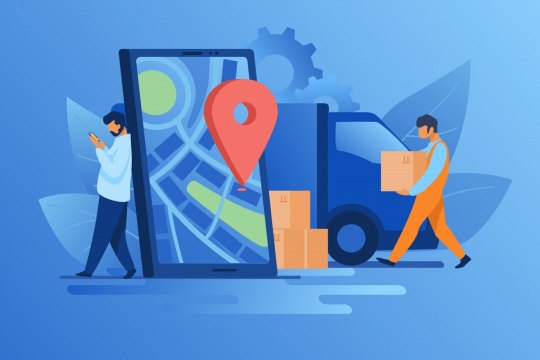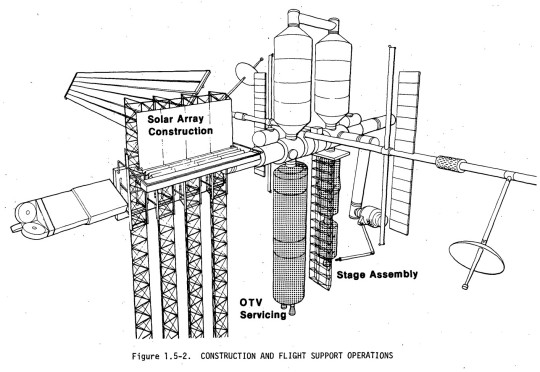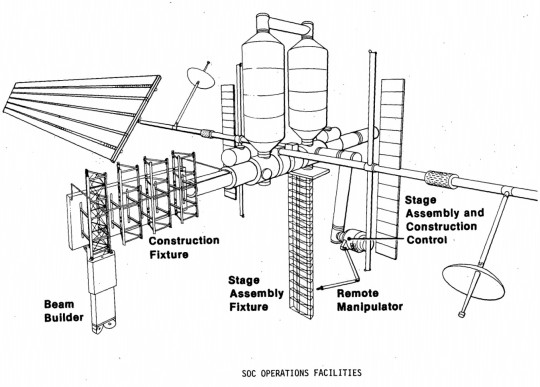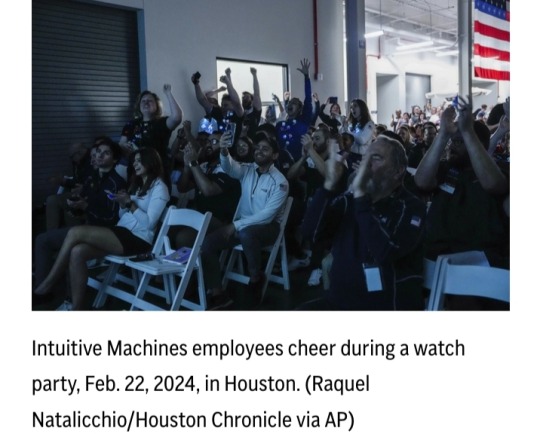#managed data center service companies
Text
#managed datacenter services#data center managed services#data center management companies#cloud managed data center services#managed data center service companies#Cloud-managed services
0 notes
Text
5 Best B2B Customer Support Tools (May 2024)
New Post has been published on https://thedigitalinsider.com/5-best-b2b-customer-support-tools-may-2024/
5 Best B2B Customer Support Tools (May 2024)
In today’s fast-paced business landscape, providing exceptional customer support is crucial for B2B companies looking to build long-lasting relationships with their clients. To meet the evolving needs of customers and streamline support operations, businesses are turning to advanced tools and platforms that offer a range of features designed to enhance the customer experience. We’ll explore the top B2B customer support tools that are changing the way businesses interact with their customers.
Supportbench is a comprehensive customer support software platform designed specifically for B2B teams. With its all-in-one approach, Supportbench empowers businesses to deliver personalized customer experiences by providing total visibility into customer interactions, activities, and future behavior.
One of the standout features of Supportbench is its ability to help B2B teams scale their support efforts. The platform’s unified workflows and customizable experience allow businesses to respond faster to customer inquiries and tailor their support to meet the unique needs of each client. By leveraging data-driven insights and predictive capabilities, Supportbench enables teams to proactively address customer concerns and deliver seamless support across various channels.
Moreover, Supportbench offers comprehensive reporting and analytics, giving businesses the tools they need to measure the performance of their customer support efforts and make data-driven decisions. With its ability to integrate with various other B2B tools, such as CRM and sales software, Supportbench streamlines operations and ensures a cohesive workflow experience for support teams.
Key features of Supportbench include:
Total visibility into customer interactions, activities, and future behavior
Scalable support infrastructure and API integrations
Unified workflows for better collaboration and efficiency
Customizable experience based on data-driven insights and predictive capabilities
Comprehensive reporting and analytics
Zendesk is a well-established customer service platform that caters to the complex needs of B2B companies. With its omnichannel support capabilities, Zendesk allows teams to manage customer interactions across multiple channels, including email, live chat, social media, and phone, all within a unified platform.
One of the key advantages of Zendesk is its integrated customer relationship management (CRM) tool. This feature provides B2B teams with a 360-degree view of their customers, enabling them to deliver more personalized support experiences. Additionally, Zendesk offers robust reporting and analytics, empowering businesses to measure the performance of their customer support efforts and make data-driven decisions.
Zendesk’s highly customizable nature and automation features make it an ideal choice for B2B companies looking to streamline their workflows and improve efficiency. The platform seamlessly integrates with a wide range of other B2B tools, ensuring a cohesive and efficient customer support experience. With its scalability, Zendesk can grow alongside a business, making it suitable for companies of all sizes.
Key features of Zendesk include:
Omnichannel support across email, live chat, social media, and phone
Integrated CRM for a 360-degree view of customers
Robust reporting and analytics capabilities
Customization and automation features
Scalability to accommodate growing customer bases and support teams
Seamless integration with various B2B tools
RingCentral is a cloud-based communication platform that offers a suite of business solutions, making it a valuable B2B customer support tool. With its cloud phone system, RingCentral enables businesses to replace traditional landlines with a more flexible and scalable communication solution.
One of the standout features of RingCentral is its omnichannel contact center, RingCX. This solution allows customers to connect with businesses across voice and multiple digital touchpoints, providing a seamless experience. RingCX offers features such as workforce engagement management, outbound sales, collections, and proactive support, empowering B2B teams to deliver exceptional customer service.
RingCentral emphasizes digital engagement capabilities, enabling businesses to connect with customers across various digital channels, including the web, social media, messaging apps, and review platforms. The platform’s integration and customization options make it a versatile choice for B2B companies. With the ability to integrate with a wide array of applications and access RingCentral’s developer platform and APIs, businesses can create custom workflows tailored to their specific needs.
Key features of RingCentral include:
Cloud-based communication system
Omnichannel contact center (RingCX)
Digital engagement capabilities across various touchpoints
Integration with a wide array of applications
Customization options through developer platform and APIs
Scalability to accommodate growing business needs
Aceyus is a contact center intelligence software that consolidates customer data from various platforms into a single view, providing B2B companies with total visibility into their customer support operations. With its advanced data mining and warehousing capabilities, Aceyus enables businesses to collect, organize, and analyze customer data from multiple sources, uncovering valuable insights.
One of the key features of Aceyus is its omnichannel reporting and analytics. The platform provides comprehensive reporting across all customer communication channels, including voice, email, chat, and social media, allowing B2B teams to gain a holistic view of their support performance. Additionally, Aceyus helps businesses visualize and understand the complete customer journey, enabling them to identify pain points and optimize the support experience.
Aceyus delivers real-time insights and visibility into contact center performance, empowering B2B companies to make data-driven decisions and respond quickly to customer needs. The platform’s scalability ensures that businesses can keep pace with increasing demand, while its customization options allow for seamless integration with various CRM, workforce management, and other business systems.
Key features of Aceyus include:
Data mining and warehousing capabilities
Omnichannel reporting and analytics
Customer journey mapping
Real-time insights and visibility into contact center performance
Scalability to accommodate growing business needs
Customization options for integration with various business systems
Aircall is a cloud-based communication platform that offers a suite of features tailored for B2B customer support teams. With its omnichannel support capabilities, Aircall allows teams to manage customer interactions across multiple channels, including voice, email, chat, and social media, all within a unified platform.
One of the advantages of Aircall is its scalable infrastructure. As a cloud-based solution, Aircall enables businesses to easily scale their customer support operations as their needs grow, without the need for additional hardware. The platform also seamlessly integrates with a wide range of B2B tools, such as CRM, helpdesk, and ecommerce platforms, allowing businesses to streamline their workflows and provide a more cohesive customer experience.
Aircall offers a range of advanced call center features, including IVR menus, skill-based routing, live call monitoring, and power dialing, helping B2B teams optimize their customer support operations. The platform’s AI transcription capabilities transcribe calls and voicemails, facilitating better ramp-up of representatives and delivery of world-class customer experiences. With its customization options and collaboration features, Aircall enhances team efficiency and customer service quality.
Key features of Aircall include:
Omnichannel support across voice, email, chat, and social media
Scalable cloud-based infrastructure
Seamless integration with various B2B tools
Advanced call center features (IVR menus, skill-based routing, live call monitoring, power dialing)
AI transcription for calls and voicemails
Customization options and collaboration features
Productivity tools to boost team performance
Streamlining B2B Customer Support Operations
These B2B customer support tools offer a range of features and capabilities designed to help businesses deliver exceptional customer experiences. By leveraging these platforms, B2B companies can streamline their support operations, gain valuable insights, and build long-lasting relationships with their clients. As the business landscape continues to evolve, investing in the right customer support tools will be crucial for staying ahead of the competition and driving success in the digital age.
#2024#ai#Analytics#API#APIs#applications#approach#apps#automation#B2B#bases#Behavior#Best Of#Business#call center#Cloud#Collaboration#Collections#communication#Companies#competition#comprehensive#crm#customer data#customer experience#customer relationship management#customer service#data#Data Mining#data-driven
0 notes
Text
Elevating Excellence: Why the Transportation and Logistics Industry Should Prioritize Enhanced Customer Service
In the fast-paced and competitive realm of transportation and logistics, the emphasis on enhanced customer service is becoming increasingly vital. This blog post delves into the reasons why the transportation and logistics industry should prioritize customer service, exploring how it can lead to increased customer satisfaction, improved operational efficiency, and a strengthened market position.

Transportation Customer Service:
Transportation customer service underscores the unique challenges and opportunities within the transportation sector. Acknowledging the specific needs of customers in the logistics chain is crucial for building lasting relationships and ensuring a positive overall experience.
Customer Support Management:
The customer support management highlights the strategic approach required to deliver exceptional customer service. Effective management of customer support processes, from order inquiries to issue resolution, is instrumental in meeting and exceeding customer expectations.
Multilingual Customer Support:
In an increasingly globalized world, the term Multilingual customer support becomes pivotal. Offering customer support in multiple languages is not just a convenience; it is a necessity in a diverse and interconnected marketplace. Multilingual customer support enhances accessibility, fosters international collaboration, and demonstrates a commitment to meeting the unique needs of a global customer base.
Reasons to Prioritize Enhanced Customer Service:
Customer Satisfaction: A focus on enhanced customer service directly correlates with increased customer satisfaction. By providing prompt and accurate information, addressing concerns proactively, and ensuring a seamless experience, businesses build trust and loyalty among their clientele.
Operational Efficiency: Streamlining customer support management contributes to operational efficiency. Resolving issues promptly, minimizing order discrepancies, and optimizing communication channels lead to smoother logistics operations and reduced disruptions.
Competitive Edge: In an industry where competition is fierce, superior customer service becomes a key differentiator. Companies that prioritize customer satisfaction gain a competitive edge, attracting and retaining clients in a market where service quality often defines success.
Brand Reputation: Customer service plays a crucial role in shaping a brand's reputation. Positive interactions with customers contribute to a positive brand image, while subpar customer service can lead to reputational damage. A strong brand reputation, built on excellent customer service, enhances market credibility and trust.
Conclusion: In conclusion, prioritizing enhanced customer service in the transportation and logistics industry is not just a matter of meeting expectations; it is a strategic imperative. From transportation customer service tailored to the unique needs of the industry to effective customer support management and multilingual support for a global clientele, the benefits are manifold. By placing customer satisfaction at the forefront, businesses in the transportation and logistics sector can navigate challenges, foster growth, and secure a prominent position in an ever-evolving and competitive marketplace. In a world where customer-centricity is paramount, elevating customer service becomes a pathway to sustained success and industry leadership.
#Transportation customer service#customer support management#Multilingual customer support#Trucking Dispatch Companies#Bpo services#Support center#Support ticket system#Live chat support#Online support#Customer support software#Healthcare bpo#Healthcare business process outsourcing#load board outsourcing#end to end supply chain#Data entry outsourcing#Business process outsourcing companies#Customer support outsourcing#claim managament#Bpo solutions#Customer support solutions#Customer support chat#supply chain outsourcing#Back office outsourcing#Customer support team#back office outsourcing services#carrier onboarding#logistics control tower#Offshore bpo#transporation customer service#Customer support ticket
0 notes
Text
Business Process Automation Software | Experience Led Transformation
Acquis cortico-X is the key to digital innovation technology services unlocking optimal mental performance and reaching your goals. It is designed to improve memory, focus, and overall cognitive powers.
#cloud infrastructure services#technology transformation services#business process automation services#it operations management software#digital process automation tools#it infrastructure automation services#automated it operations services#corporate digital transformation services#data center transformation company#it modernization strategy company
0 notes
Text
International Real Estate Investment in India: How Property Consultants Can Help
India is one of the most attractive markets for international real estate investment. The country has a growing economy, a large and young population, and a rising middle class. These factors have led to a strong demand for real estate in India, both from domestic and international investors.
Let's explore what makes India The Next Frontier for International Real Estate Investment.
Why Invest in Indian Real Estate?
India's real estate market is attractive to international investors due to various factors:
The country's GDP grew by 8.7% in 2022 and is expected to grow by 7.5% in 2023. This growth is being driven by a rising middle class, a growing manufacturing sector, and a booming IT industry.
India has a large and young population, with a median age of just 29 years old. This young population is a major driver of demand for real estate, as they are looking for homes, apartments, and commercial space. The country's middle class is expected to reach 400 million by 2023. This growing middle class is looking for better housing and is willing to pay for it.
These factors make India a promising market for international real estate investment. Commercial property consultants in India can help you navigate the complex Indian real estate market and find the right property for your investment needs. International property consultants in India like CBRE India have a deep understanding of the Indian market and can help you find properties that meet your investment criteria. They can also help you negotiate the best price for your property and manage your investment after you purchase it.
How Can International Property Consultants in India Help You Invest?
International property consultants in India can help you navigate the complex Indian real estate market and find the right property for your investment needs. These consultants have a deep understanding of the Indian market and can also help you negotiate the best price for your property. Besides managing your investment after you purchase it, CBRE India, a leading commercial property consultant, can help you arrange deals customised as per your needs.With a workforce of 1,000 employees in 12 cities, CBRE India buys, sells, leases, manages, and finances billions of dollars worth of real estate. Backed by a long history of helping international investors succeed in India, the brand provides market research and analysis to help you make mindful decisions for your investment. Labelled as a leading International property consultant in India, CBRE India can assist you with your requirements and provide you with end-to-end solutions.
#commercial property investment#commercial property for sale#data center companies in india#commercial real estate agency#commercial property for lease#commercial property#commercial land#property management services
1 note
·
View note
Text
Space Station Concepts: Space Operations Center


"The SOC is a self-contained orbital facility built up of several Shuttle-launched modules. With resupply, on-orbit refurbish- ment and orbit maintenance, it is capable of continuous operation for an indefinite period. In the nominal operational mode, the SOC is manned continuously, but unmanned operation is possible.

The present mission management and control process is characterized by a people-intensive ground monitoring and control operation involving large supporting ground information and control facilities and a highly- integrated ground-flight crew operation. In order to reduce dependence on Earth monitoring and control, the SOC would have to provide for increased systems monitoring; fault isolation and failure analysis, and the ability to store and call up extensive sets of data to support the onboard control of the vehicle; and the onboard capability for daily mission and other activity planning."



"Like most other space station studies from the mid/late 1970s its primary mission was the assembly and servicing of large spacecraft in Earth orbit -- not science. NASA/JSC signed a contract with Boeing in 1980 to further develop the design. Like most NASA space station plans, SOC would be assembled in orbit from modules launched on the Space Shuttle. The crew's tour of duty would have been 90 days. NASA originally estimated the total cost to be $2.7 billion, but the estimated cost had increased to $4.7 billion by 1981. SOC would have been operational by 1990.



NASA's Johnson Spaceflight Center extended the Boeing contract in February 1982 to study a cheaper, modular, evolutionary approach to assembling the Space Operations Center. An initial power module would consist of solar arrays and radiators. The next launches would have delivered a space tug 'garage', two pressurized crew modules and a logistics module. The completed Space Operations Center also would have contained a satellite servicing and assembly facility and several laboratory modules. Even with this revised approach, however, the cost of the SOC program had grown to $9 billion. Another problem was Space Operations Center's primary mission: spacecraft assembly and servicing. The likely users (commercial satellite operators and telecommunications companies) were not really interested in the kind of large geostationary space platforms proposed by NASA. By 1983, the only enthusiastic users for NASA's space station plans were scientists working in the fields of microgravity research and life sciences. Their needs would dictate future space station design although NASA's 1984 station plans did incorporate a SOC-type spacecraft servicing facility as well."
Article by Marcus Lindroos, from astronautix.com: link




NASA ID: link, S79-10137
Boeing photo no. R-1859, link, link
#Space Operations Center#Space Station Freedom#Space Station Concept#Space Station#Concept Art#Space Station Program#Space#Earth#Space Shuttle#Orbiter#NASA#Space Shuttle Program#1979#1980s#my post
455 notes
·
View notes
Text

There are many web hosting companies to choose from if you're taking the plunge into making your own website with a comic content management system (CMS) like ComicControl or Grawlix, a Wordpress comic theme like Toocheke or ComicPress, or a HTML template to cut/paste code like Rarebit. While these solutions are generally free, finding a home for them is... generally not. It can be hard to choose what's best for your webcomic AND your budget!
We took a look at a few of the top hosting services used by webcomics creators using webcomic CMSes, and we put out a poll to ask your feedback about your hosts!
This post may be updated as time goes on as new services enter the hosting arena, or other important updates come to light.
Questions:
💻 I can get a free account with Wix/Squarespace/Carrd, could I just use those for my comic? - Web hosts like this may have gallery functions that could be adapted to display a series of pages, but they are very basic and not intended for webcomics.
📚 Wait, I host on Webtoon, Tapas, Comic Fury, or some other comic website, why are they not here? - Those are comic platforms! We'll get into those in a future post!
🕵️♀️Why does it say "shared hosting"? Who am I sharing with? - "Shared hosting" refers to sharing the server space with other customers. They will not have access to your files or anything, so it is perfectly fine to use for most comic CMSes. You may experience slowing if there is too much activity on a server, so if you're planning to host large files or more than 10 comics, you may want to upgrade to a more robust plan in the future.
Web Host List
Neocities

Basic plan pricing: Free or $5/month. Free plan has more restrictions (1 GB space, no custom domain, and slower bandwidth, among other things)
Notes: Neocities does not have database support for paid or free accounts, and most comic CMS solutions require this (ComicCtrl, Grawlix, Wordpress). You will need to work with HTML/CSS files directly to make a website and post each page.
Hostinger

Basic plan pricing: $11.99/month or $7.99/month with four year commitment (monthly, 1, 2, and 4 year plans available).
Notes: Free domain for the 1st year. Free SSL Certifications. Weekly backups.
KnownHost

Basic plan pricing: $8.95/month or $7.99/month with four year commitment (monthly, 1, 2, and 4 year plans available).
Notes: Free DDOS protection. Free SSL Certifications.
InMotion Hosting

Basic plan pricing: $12.99/month or $9.99/month with three year commitment (monthly, 1, and 3 year plans available).
Notes: Free SSL Certifications, free domain names for 1 and 3 year plans. 24/7 live customer service and 90-day money-back guarantee.
Inmotion also advertises eco-friendly policies: We are the first-ever Green Data Center in Los Angeles. We cut cooling costs by nearly 70 percent and reduce our carbon output by more than 2,000 tons per year.
Reviews:
👍“I can't remember it ever going down.”
👍“InMotion has a pretty extensive library full of various guides on setting up and managing websites, servers, domains, etc. Customer service is also fairly quick on responding to inquiries.”
👎“I wish it was a bit faster with loading pages.”
Ionos Hosting

Basic plan pricing: $8/month or $6/month with three year commitment (monthly, 1, 2 and 3 year plans available).
Notes: Free domain for the first year, free SSL Certification,
Daily backup and recovery is included. Site Scan and Repair is free for the first 30 days and then is $6/month.
Reviews:
👍“Very fast and simple”
👎“Customer service is mediocre and I can't upload large files”
Bluehost

Basic plan pricing: $15.99/month or $4.95/month with three year commitment (monthly, 1, 3 year plans available).
Notes: Free domain and SSL certificates (for first year only). 24/7 Customer Service. Built to handle higher traffic websites. Although they specialize in Wordpress websites and provide updates automatically, that's almost a bad thing for webcomic plugins because they will often break your site. Their cloud hosting services are currently in early access with not much additional information available.
Reviews:
👎"The fees keep going up. Like I could drop $100 to cover a whole year, but now I'm paying nearly $100 for just three months. It's really upsetting."
👎"I have previously used Bluehost’s Wordpress hosting service and have had negative experiences with the service, so please consider with a grain of salt. I can confirm at least that their 24/7 customer service was great, although needed FAR too often."
Dreamhost

Basic plan pricing: $7.99/month or $5.99/month with three year commitment (monthly, 1, 3 year plans available).
Notes: Free SSL Certificates, 24/7 support with all plans, 97-day moneyback guarantee. Not recommended for ComicCtrl CMS
Reviews:
👍“They've automatically patched 2 security holes I created/allowed by mistake.”
👍“Prices are very reasonable”
👎 “back end kind of annoying to use”
👎 “wordpress has some issues”
👎 “it's not as customizable as some might want“
GoDaddy

Basic plan pricing: $11.99/month or $9.99/month with three year commitment (monthly, 1, 2, and 3 year plans available).
Notes: Free 24/7 Customer service with all plans, Free SSL Certificates for 1 year, free domain and site migration.
Reviews:
👍Reasonable intro prices for their Economy hosting, which has 25GB of storage
👍Migrated email hosting service from cPanel to Microsoft Office, which has greater support but may not be useful for most webcomic creators.
👎 Many site issues and then being upsold during customer service attempts.
👎 Server quality found lacking in reviews
👎 Marketing scandals in the past with a reputation for making ads in poor taste. Have been attempting to clean up that image in recent years.
👎 “GoDaddy is the McDonald's of web hosting. Maybe the Wal-Mart of hosting would be better.
If your website was an object you would need a shelf to put it on. You go to Wal-Mart and buy a shelf. It's not great. It's not fancy. It can only hold that one thing. And if we're being honest - if the shelf broke and your website died it wouldn't be the end of the world.The issue comes when you don't realize GoDaddy is the Wal-Mart of hosting. You go and try to do things you could do with a quality shelf. Like, move it. Or add more things to it.” MyWorkAccountThisIs on Reddit*
Things to consider for any host:
💸 Introductory/promotional pricing - Many hosting companies offer free or inexpensive deals to get you in the door, and then raise the cost for these features after the first year or when you renew. The prices in this post are the base prices that you can expect to pay after the promotional prices end, but may get outdated, so you are encouraged to do your own research as well.
💻 Wordpress hosting - Many of the companies below will have a separate offering for Wordpress-optimized hosting that will keep you updated with the latest Wordpress releases. This is usually not necessary for webcomic creators, and can be the source of many site-breaking headaches when comic plugins have not caught up to the latest Wordpress releases.
Any basic hosting plan on this list will be fine with Wordpress, but expect to stop or revert Wordpress versions if you go with this as your CMS.
🤝 You don't have to go it alone - While free hosts may be more limited, paid hosting on a web server will generally allow you to create different subdomains, or attach additional purchased domains to any folders you make. If you have other comic-making friends you know and trust, you can share your server space and split the cost!
Want to share your experience?
Feel free to contribute your hosting pros, cons, and quirks on our survey! We will be updating our list periodically with your feedback!
114 notes
·
View notes
Text
The Internet: From Nuclear-Resistant to Vendor-Dependent Dumbassery
Back in the day, when the Internet was just a glint in DARPA's eye, it was designed with one crucial concept in mind: survival. Picture this—it's the Cold War, the threat of nuclear Armageddon looms large, and the military bigwigs are sweating bullets about communication breakdowns. They needed a network that could withstand a nuke dropping on a major hub and still keep the flow of information alive. Enter the ARPANET, the badass granddaddy of the modern Internet, built to have no single point of failure. If one part got nuked, the rest would carry on like nothing happened. Resilient as hell.
Fast forward to today, and what do we have? A digital house of cards. The once mighty and decentralized Internet has become a fragile mess where a single vendor bug can knock out entire swathes of the web. How did we go from a network that could shrug off nuclear bombs to one that craps its pants over a software glitch? Let's dive into this clusterfuck.
The Glory Days of Decentralization
The original ARPANET was all about redundancy and resilience. The network was designed so that if any one part failed—be it from a technical issue or a catastrophic event—data could still find another route. It was a web of interconnected nodes, a spider's web that kept spinning even if you tore a chunk out. It was pure genius.
This approach made perfect sense. The whole point was to ensure that critical military communications could continue even in the aftermath of a disaster. The Internet Protocol (IP), the backbone of how data travels on the Internet, was conceived to route around damage and keep on trucking. No single point of failure meant no single point of catastrophic breakdown. Brilliant, right?
The Rise of Centralized Stupidity
Then came the tech giants. Companies like Google, Amazon, and Microsoft built empires that depended on centralization. Cloud computing took off, and suddenly, everyone and their grandma was storing their data on a handful of massive servers owned by these big players. It was convenient, it was efficient, but it was also the beginning of the end for the Internet’s robust decentralization.
Today, we've got massive data centers dotted around the globe, each housing thousands of servers. These centers are like Fort Knox for data, but unlike Fort Knox, they’re not immune to problems. A single screw-up—a bug in a software update, a misconfiguration, or even a physical hardware failure—can take down huge chunks of the web. Remember that time when AWS went down and half the Internet went dark? Yeah, that was fun. Or more recently, Cloudstrike do something retarded and every single Windows machine running their shitware gets bricked. Fantastic.
The Single Vendor Blues
It gets worse. The consolidation of Internet services means that many critical applications and websites rely on the same vendors for infrastructure. If one of these vendors messes up, it's not just their services that go down—it's everyone who depends on them too. It’s like having a whole city’s power grid depending on one dodgy generator. One hiccup, and the lights go out for everyone.
Consider the infamous BGP (Border Gateway Protocol) hijacks and leaks. BGP is how routers figure out the best path for data to travel across the Internet. It's crucial, and it's also vulnerable. A single misconfiguration or malicious attack can reroute traffic, causing widespread outages and security breaches. And because so much of the Internet is funneled through a few major ISPs (Internet Service Providers), the impact can be catastrophic.
Why This Is So Fucking Stupid
So, why is it that we’ve allowed the Internet to become this fragile? It boils down to a mix of convenience, cost-cutting, and plain old shortsightedness. Centralized services are easier to manage and cheaper to run. But this efficiency comes at the cost of resilience. We’ve traded the robustness of a decentralized network for the convenience of cloud services and single-vendor solutions.
The result? A network that can be crippled by a single point of failure. This isn’t just stupid—it’s dangerous. It leaves us vulnerable to attacks, outages, and other disruptions that could have far-reaching consequences. It’s a stark reminder that in our quest for efficiency, we’ve neglected one of the core principles that the Internet was founded on: resilience.
The Way Forward
What’s the solution? We need to get back to basics. Decentralization should be a priority. More diversity in service providers, more redundancy in infrastructure, and more focus on designing systems that can withstand failures. It won’t be easy, and it won’t be cheap, but if we want an Internet that can survive the challenges of the future, it’s absolutely necessary.
So next time you hear about a massive outage caused by a single vendor’s screw-up, remember: it didn’t have to be this way. We built an Internet that could survive a nuclear war, and then we broke it because it was cheaper and easier. It’s time to fix that before the next big failure hits.
There you have it, folks. From invincible to idiotic, the Internet’s journey has been a wild ride. Let’s hope we can steer it back on course before it’s too late. - Raz.
#cyberpunk#faewave#tengushee#horror#mystery#vaporwave#hauntology#wierd#strange#weird#myth#monster#fae#faerie#dark#dark art#lost media#retro#retro gaming#creepycrawly#nightmaresfuel#darkaesthetic#horrorshorts#unsettling#paranormal#cryptid#haunted#creepystories#eerie#ghostsightings
23 notes
·
View notes
Text
For more than three weeks, Gaza has faced an almost total internet blackout. The cables, cell towers, and infrastructure needed to keep people online have been damaged or destroyed as Israel launched thousands of missiles in response to Hamas attacking Israel and taking hundreds of hostages on October 7. Then, this evening, amid reports of heavy bombing in Gaza, some of the last remaining connectivity disappeared.
In the days after October 7, people living in Gaza have been unable to communicate with family or friends, leaving them unsure whether loved ones are alive. Finding reliable news about events has become harder. Rescue workers have not been able to connect to mobile networks, hampering recovery efforts. And information flowing out of Gaza, showing the conditions on the ground, has been stymied.
As the Israel Defense Forces said it was expanding its ground operations in Gaza this evening, internet connectivity fell further. Paltel, the main Palestinian communications company, has been able to keep some of its services online during Israel’s military response to Hamas’ attack. However, at around 7:30 pm local time today, internet monitoring firm NetBlocks confirmed a “collapse” in connectivity in the Gaza Strip, mostly impacting remaining Paltel services.
“We regret to announce a complete interruption of all communications and internet services within the Gaza Strip,” Paltel posted in a post on its Facebook page. The company claimed that bombing had “caused the destruction of all remaining international routes.” An identical post was made on the Facebook page of Jawwal, the region’s biggest mobile provider, which is owned by Paltel. Separately, Palestinian Red Crescent, a humanitarian organization, said on X (formerly Twitter) that it had lost contact with its operation room in Gaza and is “deeply concerned” about its ability to keep caring for people, with landline, cell, and internet connections being inaccessible.
“This is a terrifying development,” Marwa Fatafta, a policy manager focusing on the Middle East and North Africa at the digital rights group Access Now, tells WIRED. “Taking Gaza completely off the grid while launching an unprecedented bombardment campaign only means something atrocious is about to happen.”
A WIRED review of internet analysis data, social media posts, and Palestinian internet and telecom company statements shows how connectivity in the Gaza Strip drastically plummeted after October 7 and how some buildings linked to internet firms have been damaged in attacks. Photos and videos show sites that house various internet and telecom firms have been damaged, while reports from official organizations, including the United Nations, describe the impact of people being offline.
Damaged Lines
Around the world, the internet and telecoms networks that typically give web users access to international video calls, online banking, and endless social media are a complicated, sprawling mix of hardware and software. Networks of networks, combining data centers, servers, switches, and reams of cables, communicate with each other and send data globally. Local internet access is provided by a mix of companies with no clear public documentation of their infrastructure, making it difficult to monitor the overall status of the system as a whole. In Gaza, experts say, internet connectivity is heavily reliant on Israeli infrastructure to connect to the outside world.
Amid Israel’s intense bombing of Gaza, physical systems powering the internet have been destroyed. On October 10, the United Nations’ Office for the Coordination of Humanitarian Affairs (OCHA), which oversees emergency responses, said air strikes “targeted several telecommunication installations” and had destroyed two of the three main lines of communications going into Gaza.
Prior to tonight’s blackout, internet connectivity remained but was “extremely slow and limited,” Access Now’s Fatafta says. People she has spoken to from Gaza say it could take a day to upload and send a few photos. “They have to send like 20 messages in order for one to go through,” Fatafta says. “They are desperately—especially for Gazans that live outside—trying to get through to their families.”
“Every time I try to call someone from family or friends, I try to call between seven to 10 times,” says Ramadan Al-Agha, a digital marketer who lives in Khan Yunis, a city in the south of the Gaza Strip. “The call may be cut off two or three times,” he told WIRED in a WhatsApp message before the latest outages. “We cannot access news quickly and clearly.” People in the region have simultaneously faced electricity blackouts, dwindling supplies of fuel used to power generators, and a lack of clean water, food, and medical supplies. “It is a humanitarian disaster,” Al-Agha says.
Connectivity in Gaza started to drop not long after Israel responded to the October 7 Hamas attack. Rene Wilhelm, a senior R&D engineer at the nonprofit internet infrastructure organization Ripe Network Coordination Center, says based on an analysis of internet routing data it collects that 11 Palestinian networks, which may operate both in the West Bank and Gaza Strip, began to experience disruption after October 7. Eight of the networks were no longer visible to the global internet as of October 23, Wilhelm says. Ahead of this evening’s blackout, there was around 15 percent of normal connectivity, according to data from Georgia Tech’s Internet Outage Detection and Analysis project. That dropped to around 7 percent as reports of the blackout circulated.
One office belonging to Paltel in the Al Rimal neighborhood of Gaza City has been destroyed in the attacks, photos and videos show. Floors have been destroyed and windows blown away in the multistory building, and piles of rubble surround the entrances. (It is unclear what equipment the building housed or how many floors Paltel occupied.) Another internet provider, AlfaNet, is listed as being based in the Al-Watan Tower. The company posted to its Facebook page on October 8 that the tower had been destroyed and its services have stopped, with other online posts also saying the tower has been destroyed.
Multiple Palestinian internet and telecoms firms have said their services have been disrupted during the war, mostly posting to social media. Internet provider Fusion initially said its engineers were trying to repair its infrastructure, although it has since said this is not continuing. “The network was destroyed, and the cables and poles were badly damaged by the bombing,” it wrote on Facebook. JetNet said there had been a “sudden disruption” to access points. SpeedClick posted that the situation was out of its control. And HiNet posted that it has “no more to offer to ensure” people could stay online following “the attacks and destruction our internet servers have suffered.”
Across Paltel’s network on October 19, according to an update shared by the Office for the Coordination of Humanitarian Affairs, 83 percent of fixed line users had been disconnected, with 53 percent of sites providing fixed line connections also being offline. Half of the company’s fiber optic internet lines in Gaza weren’t operational, the update says. The connectivity disappeared this evening, according to Paltel’s Facebook post, which says there has been a “complete interruption” of all its services. Paltel, AlfaNet, Fusion, and SpeedClick could not be reached or did not respond to requests for comment.
Lost Connections
In recent years, governments and authoritarian regimes have frequently turned to shutting down the internet for millions of people in attempts to suppress protests and curtail free speech. Targeting the communications networks is common during conflicts. During Russia's war in Ukraine, its forces have decimated communications networks, tried to take over the internet, and set up new mobile companies to control information flows. When Hamas first attacked Israel on October 7, it used drones to bomb communications equipment at surveillance posts along the borders of the Gaza Strip.
Monika Gehner, the head of corporate communications at the International Telecommunication Union, says the body is always “alarmed” by damage inflicted on any telecommunications infrastructure during conflicts. The ITU, the United Nations’ primary internet governance body, believes “efficient telecommunication services” are crucial to peace and international cooperation, and its secretary-general has called for respecting infrastructure in the Middle East, Gehner says.
Officials in Israel have consistently claimed they are targeting Hamas militants within Gaza, not civilians, while responding to the Hamas attacks, which killed more than 1,400 people in Israel. The Hamas-run Health Ministry within Gaza has said more than 7,000 people have been killed there and released a list of names. A spokesperson for the Israel Defense Forces did not respond to WIRED’s questions about internet disruptions within Gaza.
Hanna Kreitem, a senior adviser for internet technology and development in the Middle East and North Africa at the Internet Society, an open internet advocacy nonprofit, says Palestinian firms have a “big reliance” on Israeli internet firms. “Palestinians are not controlling any of the ICT infrastructure,” says Mona Shtaya, a non-resident fellow at the Tahrir Institute for Middle East Policy. Mobile networks in the Gaza Strip rely on 2G technologies. Al-Agha, the digital marketer, shared a screenshot showing mobile internet speeds of 7.18 kilobytes per second; average mobile speeds in the US in 2022 were 24 megabits per second, according to mobile analytics firm Statista.
“The internet is vital in times of war in crises,” says Fatafta, the Access Now policy manager, who adds that there can be “terrible consequences” linked to connectivity blackouts. The UN’s OCHA said rescue workers have had a harder time “carrying out their mission” partly due to the “limited or no connection to mobile networks.” Al-Agha says he has lost some clients due to the disruptions. The lack of connectivity can obscure events that are happening on the ground, Fatafta says. News crews have told WIRED they have footage from the ground but are “losing the story because of the internet.”
Kreitem says that a lack of electricity and access to the equipment will have made an impact on top of any physical damage to communications networks. “We don't know how many of the people that actually operate these networks are still alive,” Kreitem says. “The network operators are part of the world there, there's no place for them to run. They are as affected as any other person.”
90 notes
·
View notes
Text



Orikero blast attack!!! These fellas have been rattling around in my head for a couple months now. Lore stuff under the cut <3
It’s mentioned once or twice in the series that the planet Keron’s weather is controlled via satellite. I like to think the weather conditioning satellite (WCS) is less like an unmanned satellite and more like a space station, with crew both on the planet’s surface and aboard the satellite - constantly working to keep the installation up and running.
A weather satellite might seem like a huge deal to humans, but to Keron’s general public it’s regarded with about as much reverence as a power plant or water treatment center. It’s just a municipal service to them, and one they seriously take for granted! You can take tours of the satellite sorta like how one can tour money mints or chocolate factories here on earth. There’s a gift shop!
Rotada is the highest-ranking non-military crew member of the WCS, holding the position of head engineer. The WCS is her pride and joy, and even if she isn’t the station’s official captain, she’s pretty much the de-facto second in command. Often butts heads with the actual captain (Neneki) about what’s best for the WCS and its crew.
Kind, but not nice.
She knows just about everything that goes on around here.
Before working on the WCS, she was an engineer for an aerospace company.
Rocheche is one of the WCS’s many onboard scientists. He’s specifically in quality control - keeping an eye on the station's near-constant stream of data to ensure the planet’s artificial weather patterns are flowing smoothly.
The new guy.
Developing a caffeine addiction as we speak.
Fresh out of college and fought tooth and nail to get this job. "Per my last email" is his most often typed sentence this year!
Neneki is the WCS's captain and a warrant officer in the Keronian army. He'd been assigned to the satellite as punishment after being demoted from the rank of second lieutenant, but he's actually been enjoying himself immensely. He's not sure what to think about Rotada, and sometimes clashes with her if he feels she’s undermining his authority too much.
Easy-going. To a point...
Misses his wife. When's his next shore leave coming up???
Before being sent to the WCS, he served as an ambassador / negotiator for the Keronian Empire.
Neneki might’ve only gone down one military rank when he got demoted, but he essentially is a former diplomat sent to manage a municipal / scientific facility. Considering how much importance Keron assigns to military jobs… they did him dirty. At least he's having fun?
Junii is a tour guide, as well as a member of the satellite's PR team.
Chipper and friendly, shes pretty good at keeping kids entertained. Probably because she herself is easily amused.
Double-faced like a Janus cat. She is able to talk with both mouths at once, but since shes only got one set of lungs she runs out of air faster. She usually only does this as a party trick.
i quite literally just realized she looks like beta-design tamama. someone come and kill me right the fuck now
#keroro gunso#orikero#myart#theres more wcs crew i want to make but for now?? im tired.#neneki was the easiest to design! while rotada's color scheme took me literal hours... Rocheche is somewhere in the middle#if you're curious about these guys or the satellite they live in you can shoot me an ask. brainstorming with an audience is fun.#oc Rotada#oc Rocheche#oc Neneki#oc junii#Keron WCS#edit. fucking christ i misspelled nenekis title. hes a WARRANT officer not a warden officer.#edit: JUNII HAS LANDED. shes been a thing before neneki was designed i just needed to figure out her COLOR SCHEME. IM SO BAD AT THISSSS
26 notes
·
View notes
Text


The United States has returned to the lunar surface for the first time in more than 50 years after a privately-built spacecraft named Odysseus capped a nail-biting 73-minute descent from orbit with a touchdown near the moon’s south pole.
Amid celebrations of what NASA hailed “a giant leap forward,” there was no immediate confirmation of the status or condition of the lander, other than it had reached its planned landing site at crater Malapert A.
But later Intuitive Machines, the Texas-based company that built the first commercial craft to land on the moon, said the craft was “upright and starting to send data.”
The statement on X said mission managers were “working to downlink the first images from the lunar surface.”
The so-called “soft landing” on Thursday, which Steve Altemus, the company’s founder, had given only an 80% chance of succeeding, was designed to open a new era of lunar exploration as NASA works towards a scheduled late-2026 mission to send humans back there.
“Welcome to the moon,” Altemus said when touchdown when the 5.23pm touchdown was eventually confirmed, after about 10 minutes in which Odysseus was out of contact.
It was the first time any US-built spacecraft had landed on the moon since NASA’s most recent crewed visit, the Apollo 17 mission in December 1972, and the first visit by commercial vehicle following last month’s failure of Peregrine One, another partnership between the space agency and a private company, Astrobotic.

“Today, for the first time in more than a half century, the US has returned to the moon. Today, for the first time in the history of humanity, a commercial company, an American company, launched and led the voyage up there,” Bill Nelson, the NASA administrator, said.
“What a triumph. Odysseus has taken the moon. This feat is a giant leap forward for all of humanity.”
There was no video of Odysseus’s fully autonomous descent, which slowed to about 2.2mph at 33ft above the surface.
But a camera built by students at Florida’s Embry-Riddle Aeronautical University was designed to fall and take pictures immediately before touchdown, and NASA cameras were set to photograph the ground from the spacecraft.
The 14ft (4.3 metres) hexagonal, six-legged Nova-C lander, affectionately nicknamed Odie by Intuitive Machines employees, is part of NASA’s commercial lunar payload services (CLPS) initiative in which the agency awards contracts to private partners, largely to support the Artemis program.
NASA contributed $118m to get it off the ground, with Intuitive Machines funding a further $130m ahead of its February 15 launch from Florida’s Kennedy Space Center on a Falcon 9 rocket from Elon Musk’s SpaceX company.

The IM-1 mission, like the doomed Peregrine effort, is carrying a payload of scientific equipment designed to gather data about the lunar environment, specifically in the rocky region chosen as the landing site for NASA’s crewed Artemis III mission planned for two years’ time.
It is a hazardous area – “pockmarked with all of these craters,” according to Nelson – but chosen because it is believed to be rich in frozen water that could help sustain a permanent lunar base crucial to future human missions to Mars.
Scientists announced last year that they believed tiny glass beads strewn across the moon’s surface contained potentially “billions of tonnes of water” that could be extracted and used on future missions.
The risks are worth it, Nelson told CNN on Thursday, “to see if there is water in abundance. Because if there’s water, there’s rocket fuel: hydrogen, and oxygen. And we could have a gas station on the south pole of the moon.”
The planned operational life of the solar powered lander is only seven days, before the landing site about 186 miles from the moon’s south pole moves into Earth’s shadow.
But NASA hopes that will be long enough for analysis of how soil there reacted to the impact of the landing.
Other instruments will focus on space weather effects on the lunar surface, while a network of markers for communication and navigation will be deployed.
“Odysseus, powered by a company called Intuitive Machines, launched upon a SpaceX rocket, carrying a bounty of NASA scientific instruments, is bearing the dream of a new adventure in science, innovation, and American leadership in space,” Nelson said.


Through Artemis, NASA’s return-to-the-moon program that also has longer-term visions of crewed missions to Mars within the next two decades, the US seeks to stay ahead of Russia and China, both of which are planning their own human lunar landings.
Only the US has previously landed astronauts in six Apollo missions between 1969 and 1972, while five countries have placed uncrewed spacecraft there.
Japan joined the US, Russia, China, and India last month when its Smart Lander for Investigating the Moon (Slim) made a successful, if awkward touchdown after a three-month flight.
Two further Intuitive Machines launches are scheduled for later this year, including an ice drill to extract ingredients for rocket fuel, and another Nova-C lander containing a small Nasa rover and four small robots that will explore surface conditions.
https://www.theguardian.com/science/2024/feb/22/us-moon-landing-odysseus-intuitive-machines
youtube
US returns to lunar surface with for first time in over 50 years
23 February 2024
A spacecraft built and flown by Texas-based company Intuitive Machines landed near the south pole of the moon, the first US touchdown on the lunar surface in more than half a century, and the first ever achieved entirely by the private sector.
Communication with Odysseus seemed be lost during the final stages of the landing, leaving mission control uncertain as to the precise condition and position of the lander, according to flight controllers heard in the webcast.
US returns to lunar surface for first time in over 50 years: ‘Welcome to the moon.’
#Odysseus#Intuitive Machines#Youtube#NASA#Malapert A#moon#moon landing#spacecraft#Steve Altemus#lunar exploration#Bill Nelson#Nova-C lander#Odie#commercial lunar payload services (CLPS)#Artemis#Kennedy Space Center#Falcon 9#Elon Musk#SpaceX#IM-1 mission#Smart Lander for Investigating the Moon (SLIM)#lunar lander#earth
23 notes
·
View notes
Text
Ko-fi prompt from Becky:
I actually would love to hear where ticket/concession/merch money for concerts go. If someone has already asked about that, can you do something similar for a sports game of your choice?
Already got a request for concerts, but I can do the sports game!
So, let's go with... baseball. I've been to professional baseball games ('twas the Ducks), even if it's been a Very Long Time, so that's the one I have some perspective on. Who is in control of the money any given game (as in, who owns the stadium and the home team) varies by place and sport, so let's use the Mets and Citi Field as our example when we need a specific.
Mostly, this is because I'm in New York and so it's down to either them or the Yankees, and between the two... the Mets, through a wholly owned subsidiary, Queens Ballpark Company, are the ones that actually own their ballpark, which makes a few things easier and includes a Fun Fact about the naming. It also means that I can treat the team and the stadium as one singular entity instead of waffling over who gets to be the Main Character of this simulation. It's not exactly uncommon for teams to own their own stadiums, but it's not most of them.
(The Mets, btw, are owned in large part by a hedge fund manager. Like, 95% of the team stock is owned by this one guy. Why can't more sports be like the Packers and just belong to the city.)
In this case, I will be referring to the Forbes article on Citi Field's revenue for 2022 as a guide or framework, as they have an actual image of the financial report; they don't do much explaining of the actual data, though, so my part will be explaining the less-obvious things and doing some maths. A few other articles will also be cited as they come in useful.
I'll also note that the Mets are a very expensive team operating at a loss, but they still work for our purposes.
MONEY COMING IN:
Tickets, most obviously
To quote the wiki article on Major League Baseball:
"MLB is the second-wealthiest professional sport league by revenue after the National Football League (NFL). [...] MLB has the highest total season attendance of any sports league in the world; in 2018, it drew more than 69.6 million spectators."
I didn't know that until I started researching for this post, but it makes sense. After all, baseball is "the American pastime." The Forbes article cites average attendance of 33,000 per home game. The stadium seat about 41,900, so we're looking at roughly 79% attendance. This is fine, because attendance is not the only stream of revenue.
Advertising
If you have seen a professional sports game in the past however many years, you have seen that, depending on the type of court, they are plastered in advertising. Let's take a look at Citi Field:

(Image Source: MLB website)
The Forbes article states that the stadium makes about $48.5 million per year from advertising. About $28.5 million of that comes from the various 'temporary' and long-term ads, the Nikon and Geico and Toyota and Coca Cola, etc.
$20 million of it comes from one company. I'm going to quote Wikipedia again:
The naming rights were purchased by Citigroup, a New York financial services company, for $20 million annually.
This is not uncommon! ESPN has an article about it, and some standout examples are Bank of America Stadium, Coors Field, Delta Center, FedEx Field and FedEx Forum, General Motors Place, Gillette Stadium, Heinz Field, and the list just goes on. I'm not even sure if the list is up to date, because I'm seeing even more articles elsewhere with higher figures.
Concessions
The financial report that Forbes cites has $22mill in concessions. This is not entirely surprising. Going by this page, we're looking at... 84 home games in that 2022 season. Let's assume that 33,000 average cited earlier. That's 2,772,000 attendees over the course of the season. So, what, a little under $10 per attendance tick? Entirely plausible. A hot dog plus a soda is $15, so... that tracks.
Parking
Apparently parking is, collectively, about $13mill annually. That's... genuinely a little concerning to me, for uh. Reasons. Also parking is $40.
(A lot of people go to games via train, if anyone's interested.)
Luxury Suite Premiums
I had to google this one, but uh. Turns out those fancy private box seats are even fancier and more private than I thought, bringing in over $10 mill a year.
Other Revenue - Stadium, undefined
"Other Revenue" and "post season revenue" are not given any further information, but they're about $16.5 mill so. They're definitely doing their part? Wish we had more information.
One guess is that there are events in the vein of the Citi Field Spring Carnival that contribute to the revenue through either fees to the stadium (if this is a carnival that rents the parking lot) or concessions and tickets (if the stadium rents a carnival).
Other Revenue - to the team that is not direct operating income of the stadium itself
Not counting the "other revenue" section of the financial statement, the Forbes article tells us that:
National broadcasting deals with Fox, ESPN and TBS that pay over $60 million a year to every MLB team, as well as the local cable fee the Mets get from SNY, which is over $80 million a year.
That's another $140mill in addition to the $244mill that the financial report cites.
Merchandise - not direct stadium revenue.
Get your Mets hats here! And your jerseys! And your logo bats! And your commemorative plushies! And--
MONEY GOING OUT
Operations
This one's easy: you have to pay wages to your employees, from the players themselves to the food sellers to janitorial to security to field maintenance, etc. Also, you have to pay for utilities (those billboards and floodlights aren't cheap), product to sell (frozen hot dogs), supplementary materials for products you sell (plastic cups, paper for the ticket machines, bags for garbage cans, and so on), and repairs/maintenance for the stands themselves (can't imagine they get through a season with all 41,900 seats intact).
Player salaries (and a few others, like the coach) aren't actually included in stadium revenue, but since the stadium is owned by the team, we're bundling them together for the sake of this case.
Payment in Lieu of Taxes
So this is an interesting one, and while the Forbes article does touch on it, there's a bit more detail to the story.
Citi Field was built in 2009, and the process cost $850 million. Of that, $615 was public subsidies. A lot of this was municipal bonds, which the Mets have to pay back with interest for the lifetime of the park; those municipal bond repayments are an offset, and in return for paying tens of millions in municipal bond repayments each year (the 2022 report shows about $43.5 mill), Citi Field does not have to pay property taxes.
Wikipedia only cites property taxes, but the financial report doesn't include any other taxes, so I'll assume the only other taxes they're on the hook for are sales and payroll, which aren't displayed in the financial report.
Parking
Right, so, parking as a bundle is about $7.5 mill in expenses, which means that parking alone has a marginal profit of about 42.3%, given the earlier figure of $13mill in parking revenue. I'm not finding any solid information on where that money goes, but it seems very like that New York City's taxes on land use for parking is not included in the property tax exemption we discussed above, and that most of the $7.5 mill is in that regard.
Post Season Expenses
I'll be honest, they don't define this $1.8 mill, but given what is and isn't included in the other sections, I'm going to hazard a guess that this may be about upgrades (more than maintenance) or replacement of physical billboards that are also not included as regular maintenance but require a lot of manpower to get up and set if complicated enough.
General and Administrative
This is the other possible allocation of the utilities and related payments. This is also where back of house activities like accountants, lawyer fees, payroll clerks, facilities managers, and so on are bundled in. It's about $5.5 mill.
Publicity and Promotions
This one's easy, it's just marketing that doesn't fall into General Mets Things and is rather for home games specifically.
Depreciation and Amortization
Bit trickier, but you know how a car loses value the second you drive it off the lot? That is depreciation. You paid $20,000 for a car, but two years later it's worth $16,000; on a financial report, you put that down as a $4,000 loss to depreciation. Amortization is similar, in that it lowers values of various assets in relation to time and relative value to what it was when new.
Interest Expenses
Expenses related directly to interest rates tend to get their own line separate from regular debt repayments. This isn't really relevant beyond 'loans are more expensive than when you first get them.'
Travel and League Expenses
Since this is a traveling team, being professionals, and a Major League Baseball Team in particular, money has to be spent on the plane rides, team bus, and of course, the league fees. I wanted to end that a bit more pithy, but it turns out it's not easy to find league fees for the MLB.
(A new team joining would have to pay about $2.2 billion, according to one article, while previous new additions were a couple hundred mill, so... 100 mill? Maybe?)
Hope that answers your question!
#economics#capitalism#phoenix talks#ko fi#ko fi prompts#research#baseball#the mets#citi field#sports#business#financial reports
48 notes
·
View notes
Text
Maximising Your Investment Potential: Working with Commercial Property Consultants in India
India's commercial real estate market has witnessed significant growth in recent years, due to factors such as urbanisation, infrastructure development, and increasing foreign investments. In today's dynamic and competitive business landscape, investing in commercial properties has emerged as a lucrative option. However, navigating the complexities of the real estate sector and identifying profitable opportunities can be a daunting task for investors. This is where commercial property consultants in India play a crucial role. By partnering with these professionals, investors can maximise their investment potential and achieve their financial goals.
Delivering Market Insights:
Commercial property consultants in India have their fingers on the pulse of the real estate market. They are well-versed in market dynamics, emerging trends, and the economic factors influencing commercial property investments. By partnering with these consultants, investors gain access to valuable market insights that can inform their investment decisions.
Customised Investment Strategies:
Every investor has unique goals and requirements when it comes to commercial property investments. Commercial property consultants work closely with their clients to understand their specific objectives and tailor investment strategies accordingly. They conduct thorough research, perform financial analysis, and consider factors such as risk tolerance & desired returns. By developing customised investment strategies, consultants can help investors align their real estate portfolio with their overall financial objectives.
Extensive Network and Connections:
Commercial property consultants in India have a vast network of industry professionals, including builders, landlords, tenants, and developers. This network gives them access to opportunities and insider information that may not be readily available to the general public. They can also establish connections with potential partners, lenders, or legal experts, streamlining the investment process and maximising the chances of success.
Negotiation
Commercial property consultants serve as intermediaries between investors and property sellers. CBRE is one such real estate consultancy company with a forte in the commercial real estate investment sector. Their negotiation skills and market knowledge allow them to secure favourable terms and conditions for their clients. They can help in structuring deals that align with investors' financial objectives. By leveraging their expertise, investors can navigate complex negotiations, optimise their investment returns, and ensure a smooth transaction process.
Risk Mitigation
Investing in commercial properties involves various legal and regulatory aspects. Commercial property consultants conduct thorough research to mitigate potential risks and ensure that investors are well-informed about any legal obligations or restrictions. By working with consultants, offering services in advisory transactions and investment advisory, investors can minimise legal complications and safeguard their investments.
Optimised results
With scale, supply chain expertise and innovative technology, the experts at CBRE help investors reduce costs, increase efficiencies and create memorable on-site experiences. CBRE's advisory services can assist investors in identifying high-yield investment opportunities, managing risk, and maximising returns. CBRE, which is also a leading international property consultant in India, offers all-inclusive services at the levels of sale , leasing , project management, facility management , property management, consultancy , valuation and residential services at both national and international to derive optimised results.
#commercial property for lease#commercial property investment#data center companies in india#commercial land#commercial property for sale#commercial property#commercial real estate agency#property management services
1 note
·
View note
Text
Maximizing Your Income: 25 Effective Ways to Make More Money from Home - Money Earn Info

Get Over 2,500 Online Jobs. You may have already tried to make money online. Here is Some Information about Easy Job you can do from home.
👉 Offers for you
.
.
Freelancing Across Multiple Platforms: Expand your freelancing endeavors by joining multiple platforms such as Upwork, Freelancer, and Fiverr. Diversifying your presence can increase your visibility and attract a broader range of clients.
Remote Consulting Services: If you possess expertise in a particular field, consider offering consulting services. Platforms like Clarity — On Demand Business Advice connects consultants with individuals seeking advice, providing an avenue for additional income.
youtube
Create and Sell Online Courses: Capitalize on your skills and knowledge by creating online courses. Platforms like Udemy, Teachable, and Skillshare allow you to share your expertise and earn money passively.
Affiliate Marketing Mastery: Deepen your involvement in affiliate marketing by strategically promoting products and services related to your niche. Building a well-curated audience can significantly increase your affiliate earnings.
Start a Profitable Blog: Launch a blog centered around your passions or expertise. Monetize it through methods like sponsored content, affiliate marketing, and ad revenue to create a steady stream of passive income.
E-commerce Entrepreneurship: Set up an online store using platforms like Shopify or Etsy. Sell physical or digital products, tapping into the global market from the comfort of your home.
Remote Social Media Management: Leverage your social media skills to manage the online presence of businesses or individuals. Platforms like Buffer and Hootsuite can streamline your social media management tasks.
Virtual Assistance Services: Offer virtual assistance services to busy professionals or entrepreneurs. Tasks may include email management, scheduling, and data entry.
Invest in Dividend-Paying Stocks: Start building a portfolio of dividend-paying stocks. Over time, as these stocks generate regular dividends, you can create a source of passive income.
Remote Graphic Design: Expand your graphic design services on platforms like 99designs or Dribbble. Building a strong portfolio can attract high-paying clients.
Web Development Projects: If you have web development skills, take on remote projects. Websites like Toptal and Upwork connect skilled developers with clients in need of their services.
Launch a YouTube Channel: Create engaging and valuable content on a YouTube channel. Monetize through ad revenue, sponsorships, and affiliate marketing as your channel grows.
Digital Product Sales: Develop and sell digital products such as ebooks, printables, or templates. Platforms like Gumroad and Selz make it easy to sell digital goods online.
Stock Photography Licensing: If you have photography skills, license your photos to stock photography websites. Each download earns you royalties.
Remote Transcription Jobs: Explore opportunities in remote transcription on platforms like Rev or TranscribeMe. Fast and accurate typists can find quick and consistent work.
Participate in Paid Surveys: Sign up for reputable paid survey websites like Swagbucks and Survey Junkie to earn extra income by providing your opinions on various products and services.
Remote Customer Service Representative: Many companies hire remote customer service representatives. Search job boards and company websites for remote customer service opportunities.
Cashback and Rewards Apps: Use cashback apps like Rakuten and Honey when shopping online to earn cashback and rewards on your purchases.
Create a Niche Podcast: Start a podcast around a niche you are passionate about. Monetize through sponsorships, affiliate marketing, and listener donations.
Automated Webinars for Digital Products: Create automated webinars to promote and sell digital products or services. This hands-off approach can generate income while you focus on other tasks.
youtube
Rent Out Your Property on Airbnb: If you have extra space in your home, consider renting it out on Airbnb for short-term stays. This can be a lucrative source of additional income.
Remote SEO Services: If you have expertise in search engine optimization (SEO), offer your services to businesses looking to improve their online visibility.
Invest in Real Estate Crowdfunding: Diversify your investment portfolio by participating in real estate crowdfunding platforms like Fundrise or RealtyMogul.
Create a Subscription Box Service: Develop a subscription box service around a niche you are passionate about. Subscribers pay a recurring fee for curated items.
Remote Project Management: Utilize your project management skills by taking on remote project management roles. Platforms like Remote OK and Home feature remote opportunities.
Making more money from home is not just a possibility; it’s a reality with the myriad opportunities available in today’s digital age. By diversifying your income streams and leveraging your skills, you can create a robust financial foundation. Whether you choose to freelance, start an online business, or invest in passive income streams, the key is consistency and dedication. Explore the strategies outlined in this guide, identify those that align with your strengths and interests, and embark on a journey to maximize your income from the comfort of your home.
#makemoneyonline #makemoney #money #workfromhome #entrepreneur #business #affiliatemarketing #bitcoin #success #onlinebusiness #forex #digitalmarketing #motivation #investment #makemoneyfast #earnmoney #financialfreedom #passiveincome #cash #businessowner #entrepreneurship #marketing #luxury #earnmoneyonline #millionaire #makemoneyonlinefast #makemoneyfromhome #investing #cryptocurrency #onlinemarketing
#makemoneyonline#makemoney#money#workfromhome#entrepreneur#business#affiliatemarketing#bitcoin#success#onlinebusiness#forex#digitalmarketing#motivation#investment#makemoneyfast#earnmoney#financialfreedom#passiveincome#cash#businessowner#entrepreneurship#marketing#luxury#earnmoneyonline#millionaire#makemoneyonlinefast#makemoneyfromhome#investing#cryptocurrency#onlinemarketing
27 notes
·
View notes
Text
The bill would require the Internal Revenue Service to tax large funds that fail to sell off their single family homes over that timeframe. It already has some support in the house, where it is co-sponsored by the U.S. Representatives Nikema Williams and Linda Sánchez, as well as in the Senate, where it is cosponsored by Senator Tina Smith. Advocacy groups Private Equity Stakeholder Project, Consumer Action, and National Consumer Law Center have offered additional support.
The bill defines a hedge fund as partnerships, corporations, or real estate investment trusts that pool funds from investors and have $50 million or more in net value or assets under management, with exemptions for nonprofits and companies primarily focused on construction. Hedge funds failing to report single-family home purchases would face a $20,000 fine that would go toward a housing down payment trust fund. Funds that fail to sell off their housing stock in the timeframe required would face a tax of 50 percent of the fair market value for each property, with funds also going to the housing trust fund.
Merkley and Smith cite data from an Urban Institute report that said in 2011, no single entity owned more than 1,000 single-family rental homes, whereas by June 2022 hedge funds and institutional investors owned a cumulative 574,000 single-family homes. This includes large corporate owners like Invitation Homes, which owns more than 80,000 homes across the country. While corporate investors only own 5 percent of the nation’s single-family housing stock, the ownership is often concentrated in majority Black and Latino neighborhoods and in some neighborhoods, entire blocks have been purchased by investors.
The practice has ramped up since the beginning of the pandemic, with 28 percent of all homes sold in 2022 going to institutional investors according to Pew Charitable Trust. In 2021, a venture-funded company backed by Jeff Bezos and other billionaires also got in on the act.
19 notes
·
View notes
Text
Data Centers in High Demand: The AI Industry’s Unending Quest for More Capacity

The demand for data centers to support the booming AI industry is at an all-time high. Companies are scrambling to build the necessary infrastructure, but they’re running into significant hurdles. From parts shortages to power constraints, the AI industry’s rapid growth is stretching resources thin and driving innovation in data center construction.
The Parts Shortage Crisis
Data center executives report that the lead time to obtain custom cooling systems has quintupled compared to a few years ago. Additionally, backup generators, which used to be delivered in a month, now take up to two years. This delay is a major bottleneck in the expansion of data centers.
The Hunt for Suitable Real Estate
Finding affordable real estate with adequate power and connectivity is a growing challenge. Builders are scouring the globe and employing creative solutions. For instance, new data centers are planned next to a volcano in El Salvador to harness geothermal energy and inside shipping containers in West Texas and Africa for portability and access to remote power sources.
Case Study: Hydra Host’s Struggle
Earlier this year, data-center operator Hydra Host faced a significant hurdle. They needed 15 megawatts of power for a planned facility with 10,000 AI chips. The search for the right location took them from Phoenix to Houston, Kansas City, New York, and North Carolina. Each potential site had its drawbacks — some had power but lacked adequate cooling systems, while others had cooling but no transformers for additional power. New cooling systems would take six to eight months to arrive, while transformers would take up to a year.
Surge in Demand for Computational Power
The demand for computational power has skyrocketed since late 2022, following the success of OpenAI’s ChatGPT. The surge has overwhelmed existing data centers, particularly those equipped with the latest AI chips, like Nvidia’s GPUs. The need for vast numbers of these chips to create complex AI systems has put enormous strain on data center infrastructure.
Rapid Expansion and Rising Costs
The amount of data center space in the U.S. grew by 26% last year, with a record number of facilities under construction. However, this rapid expansion is not enough to keep up with demand. Prices for available space are rising, and vacancy rates are negligible.
Building Data Centers: A Lengthy Process
Jon Lin, the general manager of data-center services at Equinix, explains that constructing a large data facility typically takes one and a half to two years. The planning and supply-chain management involved make it challenging to quickly scale up capacity in response to sudden demand spikes.
Major Investments by Tech Giants

Supply Chain and Labor Challenges
The rush to build data centers has extended the time required to acquire essential components. Transceivers and cables now take months longer to arrive, and there’s a shortage of construction workers skilled in building these specialized facilities. AI chips, particularly Nvidia GPUs, are also in short supply, with lead times extending to several months at the height of demand.
Innovative Solutions to Power Needs

Portable Data Centers and Geothermal Energy
Startups like Armada are building data centers inside shipping containers, which can be deployed near cheap power sources like gas wells in remote Texas or Africa. In El Salvador, AI data centers may soon be powered by geothermal energy from volcanoes, thanks to the country’s efforts to create a more business-friendly environment.
Conclusion: Meeting the Unending Demand
The AI industry’s insatiable demand for data centers shows no signs of slowing down. While the challenges are significant — ranging from parts shortages to power constraints — companies are responding with creativity and innovation. As the industry continues to grow, the quest to build the necessary infrastructure will likely become even more intense and resourceful.
FAQs
1. Why is there such a high demand for data centers in the AI industry?
The rapid growth of AI technologies, which require significant computational power, has driven the demand for data centers.
2. What are the main challenges in building new data centers?
The primary challenges include shortages of critical components, suitable real estate, and sufficient power supply.
3. How long does it take to build a new data center?
It typically takes one and a half to two years to construct a large data facility due to the extensive planning and supply-chain management required.
4. What innovative solutions are companies using to meet power needs for data centers?
Companies are exploring options like modular nuclear reactors, geothermal energy, and portable data centers inside shipping containers.
5. How are tech giants like Amazon, Microsoft, and Google responding to the demand for data centers?
They are investing billions of dollars in new data centers to expand their capacity and meet the growing demand for AI computational power.
Muhammad Hussnain
Facebook | Instagram | Twitter | Linkedin | Youtube
3 notes
·
View notes